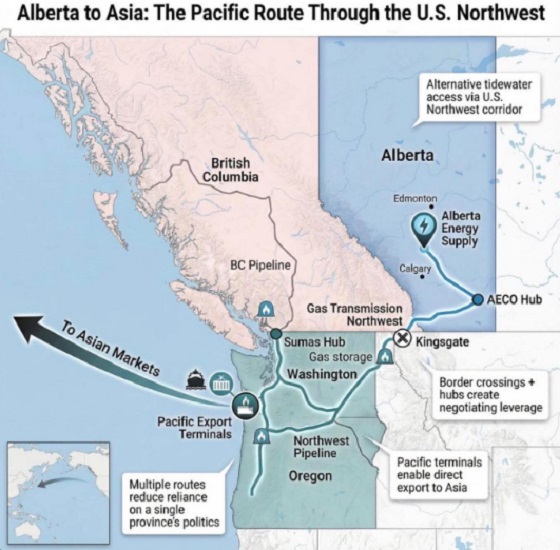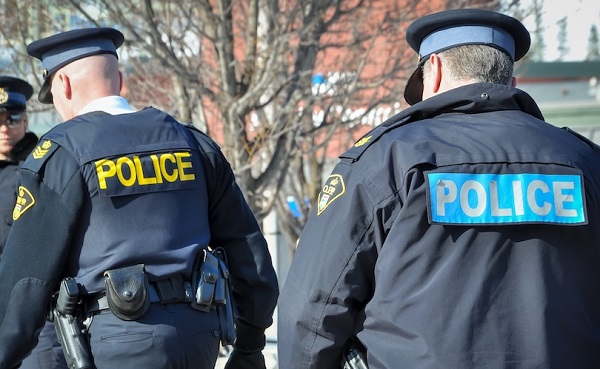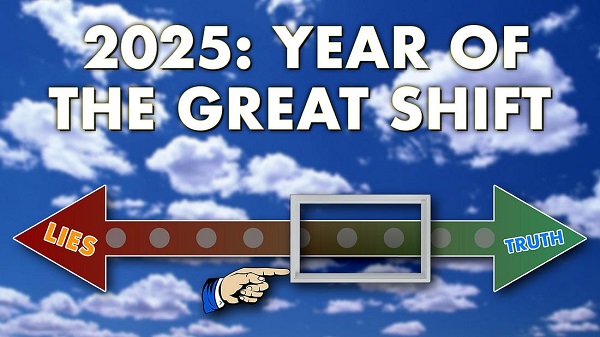Alberta
Alberta Blue Cross shares essential summer safety tips

Alberta Blue Cross shares essential summer safety tips
Plan ahead to be prepared for any situation this summer.
COVID-19 has impacted summer vacation plans for many Albertans, but the pandemic has not stopped the arrival of summer. While large social gatherings and events like festivals and outdoor concerts aren’t permitted this summer, the opportunity to spend time outdoors and travel within Alberta, responsibly, are still possible.
As a partner in Alberta’s preventable injury campaign and an organization committed to health promotion, Alberta Blue Cross® encourages Albertans to have a safe and active summer.
- Practice sun safety.
Avoid sunburns by using a broad-spectrum sunscreen with a Sun Protection Factor (SPF) of at least SPF 30. Generously apply it 20 minutes before going outside and reapply frequently. Don’t forget about your face and eyes—protect them by wearing a hat and sunglasses with an ultraviolet (UV) A/B certified seal. With kids being more sensitive to sunlight, it’s even more important they’re protected when outside for even short periods.
- Stay cool and hydrated.
Sunshine and high temperatures increase your risk of sunstroke and heat exhaustion—both can be life-threatening for infants, young children and seniors. To avoid this, stay hydrated by drinking lots of water and other non-alcoholic, non-caffeinated drinks. Increase your vitamin C intake—it provides a natural defense against heat stroke, exhaustion and heat rash. Make sure to stay cool by wearing light-coloured clothing and seeking shade often. Never leave children or pets inside a parked vehicle.
- Be safe in and on the water.
No one plans to drown, but dozens of individuals die in water-related accidents each year in Alberta. According to the 2019 Alberta Drowning Report, 220 people drowned in Alberta from 2012 to 2016, with males aged 20 to 34 years as the most common victims of drowning-related deaths. Most drownings occur in lakes, ponds and rivers—even as a good swimmer, you’re at risk of drowning if you fall out of a boat or are in an accident. When visiting bodies of water, make sure you and your family are equipped with life jackets that are properly fitted to each individual and approved by Transport Canada. Children can drown in as little as one inch of water, so never leave them unsupervised in or near water.
- Avoid pesky bug bites.
While the risk of getting a serious disease from a bug bite in Alberta is low, it’s important to be aware of the risks and how you can prevent them. Cover up with light-coloured clothing, which is less attractive to mosquitoes and allows you to see ticks easily. Wear insect repellent but apply sunscreen first. After being outside, check yourself, your children and pets for any ticks or bug bites. If you find a bug bite, follow proper instructions on how to treat it quickly to reduce the chance of infection or disease. You can find treatment instructions on MyHealth.Alberta.ca or by calling Health Link at 811.
- Play safe.
Make sure that backyard and playground equipment is properly secured to the ground and teach children how to play safely. Be especially careful around recreational trampolines, which are an increasing cause of injuries among children—and ensure all trampolines contain a safety net enclosure and that any use is closely supervised. Always supervise children playing outdoors if they’re under the age of 12—be attentive and close enough to act if needed.
- Wear a helmet.
To protect yourself from injury, it’s important to wear a helmet when on a bicycle, skateboard, scooter, rollerblades or when operating a motorized off-road vehicle. Alberta laws require helmets be worn by anyone operating a motorcycle or an off-highway vehicle—for example, an all-terrain vehicle (ATV). Albertans under the age of 18 are also required to wear a helmet when cycling. Make sure your helmet fits properly—it should be snug, level front-to-back, sit an inch above your eyebrows and allow for two fingers to fit between your chin and the strap.
- Camp safely.
Plan to be prepared for any situation when camping. Bring a map of the area and make sure someone is aware of where you’re headed—especially if there’s no cellphone service. Bring clothing for all types of weather and always pack an emergency kit with a flashlight, a radio, extra batteries and medical supplies. Avoid attracting bears to your campsite by keeping food, garbage and recyclables inside a vehicle, hard-sided trailer or bear-proof container. In the event of severe weather, seek shelter in a building or metal-roofed vehicle—never stay in your tent. Prior to your trip, be sure to check the Alberta Parks website for the most up-to-date information on camping regulations.
- Keep food fresh.
Prepare and handle foods safely to reduce the risk of food-borne illness—especially when barbequing or going outdoors. Wash your hands thoroughly before and after handling food. Use hand sanitizer if you’re camping or on a picnic. Keep food between 4 and 6°C to prevent growth of harmful bacteria. Discard any cooked food that has been at room temperature for more than two hours. When in doubt, throw it out!
- Protect your home.
Follow some of these simple tips to decrease the possibility of someone breaking into your home while you’re away on vacation—even short ones. If you’re going to mention your trip on social media, make sure your profile and status updates are set to private. While away, avoid geotagging pictures or adding the location to public status and story updates. Have friends or neighbours check in on your home to bring in mail and packages or identify any leaks or hazards that could become bigger problems. As a bonus, their visits will make potential criminals think your house is occupied.
- Keep an eye on the sky.
As you know, summer weather conditions in Alberta can change fast. Severe weather like heavy winds, hailstorms or tornadoes can be life-threatening. Before you head out, be sure to check the weather forecast. While outside, keep an eye on the sky, keep a radio or your mobile phone nearby to be aware of any weather advisories, and have a plan to find shelter should a storm arise.
Alberta
Calgary’s new city council votes to ban foreign flags at government buildings

From LifeSiteNews
It is not yet clear if the flag motion applies to other flags, such as LGBT ones.
Western Canada’s largest city has put in place what amounts to a ban on politically charged flags from flying at city-owned buildings.
“Calgary’s Flag Policy means any country recognized by Canada may have their flag flown at City Hall on their national day,” said Calgary’s new mayor Jeromy Farkas on X last month.
“But national flag-raisings are now creating division. Next week, we’ll move to end national flag-raisings at City Hall to keep this a safe, welcoming space for all.”
The motion to ban foreign flags from flying at government buildings was introduced on December 15 by Calgary councilor Dan McLean and passed by a vote of 8 to 7. He had said the previous policy to allow non-Canadian flags to fly, under former woke mayor Jyoti Gondek, was “source of division within our community.”
“In recent months, this practice has been in use in ways that I’ve seen have inflamed tensions, including instances where flag raisings have been associated with anti-Semitic behavior and messaging,” McLean said during a recent council meeting.
The ban on flag raising came after the Palestinian flag was allowed to be raised at City Hall for the first time.
Farkas, shortly after being elected mayor in the fall of 2025, had promised that he wanted a new flag policy introduced in the city.
It is not yet clear if the flag motion applies to other flags, such as LGBT ones.
Despite Farkas putting forth the motion, as reported by LifeSiteNews he is very much in the pro-LGBT camp. However, he has promised to focus only on non-ideological issues during his term.
McLean urged that City Hall must be a place of “neutrality, unity, and respect” for everyone.
“When City Hall becomes a venue for geopolitical expressions, it places the city in the middle of conflicts that are well beyond our municipal mandates,” he said.
As reported by LifeSiteNews, other jurisdictions in Canada are considering banning non-Canadian flags from flying over public buildings.
Recently a political party in British Columbia, OneBC, introduced legislation to ban non-domestic government flags at public buildings in British Columbia.
Across Canada there has also been an ongoing issue with so-called “Pride” flags being raised at schools and city buildings.
Alberta
What are the odds of a pipeline through the American Pacific Northwest?

From Resource Works
Can we please just get on with building one through British Columbia instead?
Alberta Premier Danielle Smith is signalling she will look south if Canada cannot move quickly on a new pipeline, saying she is open to shipping oil to the Pacific via the U.S. Pacific Northwest. In a year-end interview, Smith said her “first preference” is still a new West Coast pipeline through northern British Columbia, but she is willing to look across the border if progress stalls.
“Anytime you can get to the West Coast it opens up markets to get to Asia,” she said. Smith also said her focus is building along “existing rights of way,” pointing to the shelved Northern Gateway corridor, and she said she would like a proposal submitted by May 2026.
Deadlines and strings attached
The timing matters because Ottawa and Edmonton have already signed a memorandum of understanding that backs a privately financed bitumen pipeline to a British Columbia port and sends it to the new Major Projects Office. The agreement envisages at least one million barrels a day and sets out a plan for Alberta to file an application by July 1, 2026, while governments aim to finish approvals within two years.
The bargain comes with strings. The MOU links the pipeline to the Pathways carbon capture network, and commits Alberta to strengthen its TIER system so the effective carbon credit price rises to at least 130 dollars a tonne, with details to be settled by April 1, 2026.
Shifting logistics
If Smith is floating an American outlet, it is partly because Pacific Northwest ports are already drawing Canadian exporters. Nutrien’s plan for a $1-billion terminal at Washington State’s Port of Longview highlighted how trade logistics can shift when proponents find receptive permitting lanes.
But the political terrain in Washington and Oregon is unforgiving for fossil fuel projects, even for natural gas. In 2023, federal regulators approved TC Energy’s GTN Xpress expansion over protests from environmental groups and senior officials in West Coast states, with opponents warning about safety and wildfire risk. The project would add about 150 million cubic feet per day of capacity.
A record of resistance
That decision sits inside a longer record of resistance. The anti-development activist website “DeSmog” eagerly estimated that more than 70 percent of proposed coal, oil, and gas projects in the Pacific Northwest since 2012 were defeated, often after sustained local organizing and legal challenges.
Even when a project clears regulators, economics can still kill it. Gas Outlook reported that GTN later said the expansion was “financially not viable” unless it could obtain rolled-in rates to spread costs onto other utilities, a request regulators rejected when they approved construction.
Policy direction is tightening too. Washington’s climate framework targets cutting climate pollution 95 percent by 2050, alongside “clean” transport, buildings, and power measures that push electrification. Recent state actions described by MRSC summaries and NRDC notes reinforce that direction, including moves to help utilities plan a transition away from gas.
Oregon is moving in the same direction. Gov. Tina Kotek issued an executive order directing agencies to move faster on clean energy permitting and grid connections, tied to targets of cutting emissions 50 percent by 2035 and 90 percent by 2050, the Capital Chronicle reported.
For Smith, the U.S. corridor talk may be leverage, but it also underscores a risk, the alternative could be tougher than the Canadian fight she is already waging. The surest way to snuff out speculation is to make it unnecessary by advancing a Canadian project now that the political deal is signed. As Resource Works argued after the MOU, the remaining uncertainty sits with private industry and whether it will finally build, rather than keep testing hypothetical routes.
Resource Works News
-

 Agriculture22 hours ago
Agriculture22 hours agoWhy is Canada paying for dairy ‘losses’ during a boom?
-

 Automotive1 day ago
Automotive1 day agoFord’s EV Fiasco Fallout Hits Hard
-

 Alberta23 hours ago
Alberta23 hours agoAlberta’s new diagnostic policy appears to meet standard for Canada Health Act compliance
-

 Censorship Industrial Complex1 day ago
Censorship Industrial Complex1 day agoTop constitutional lawyer warns against Liberal bills that could turn Canada into ‘police state’
-

 Business2 days ago
Business2 days agoThere’s No Bias at CBC News, You Say? Well, OK…
-

 Energy2 days ago
Energy2 days agoMortgaging Canada’s energy future — the hidden costs of the Carney-Smith pipeline deal
-

 International2 days ago
International2 days ago2025: The Year The Narrative Changed
-

 International2 days ago
International2 days agoAustralian PM booed at Bondi vigil as crowd screams “shame!”






